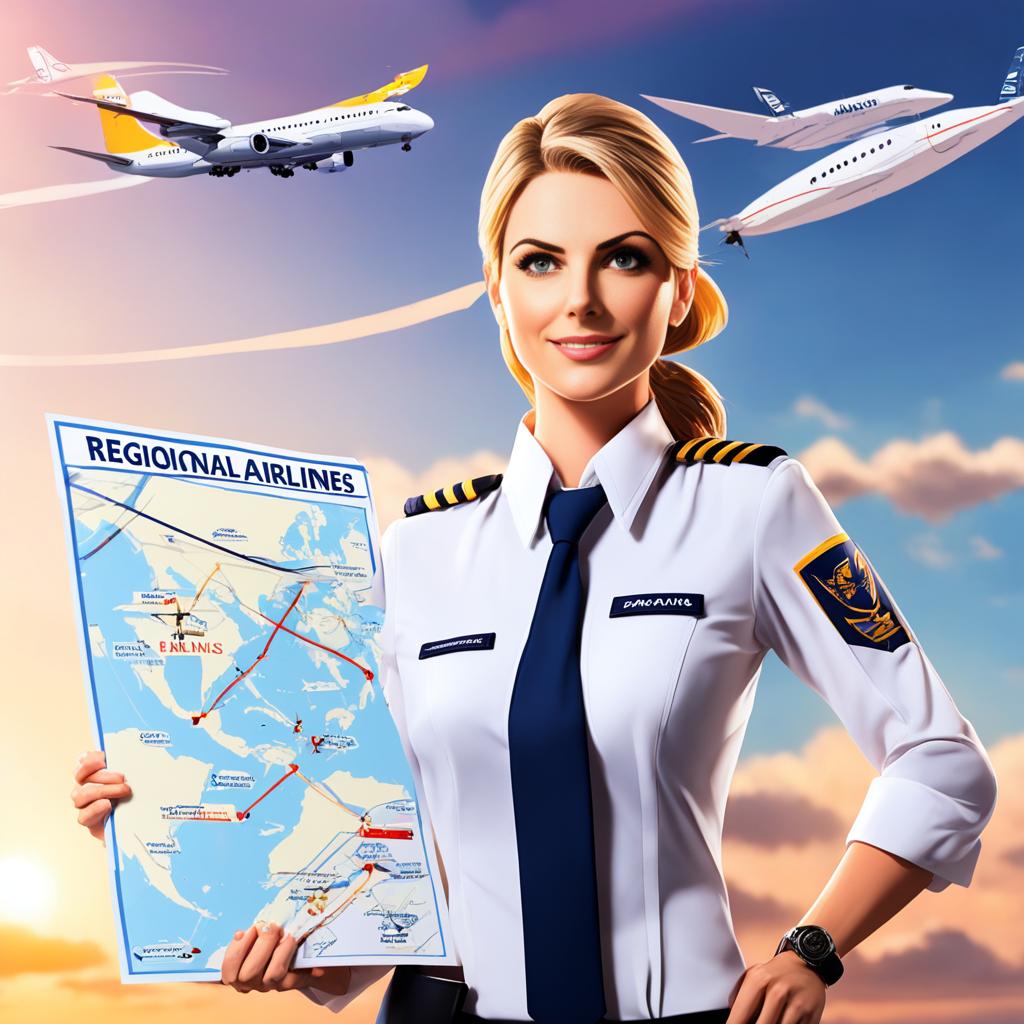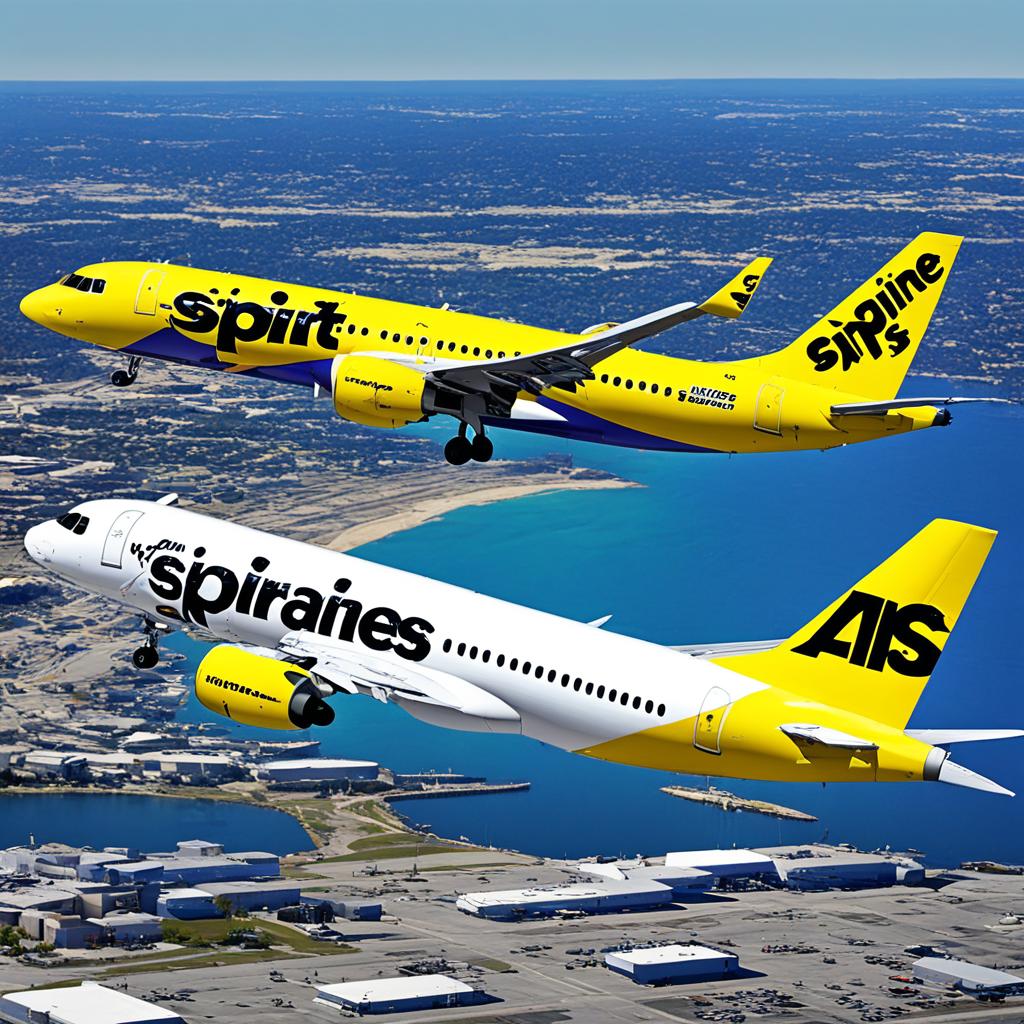When it comes to airlines, classifications can be a little confusing. With the vast array of airlines out there, it’s important to understand the distinction between regional and main carriers. One airline that often sparks curiosity is Spirit Airlines. So, is Spirit Airlines a regional airline or a main carrier?
Spirit Airlines, headquartered in Miramar, Florida, is a major United States ultra-low-cost carrier. It operates scheduled flights throughout the United States, the Caribbean, and Latin America. With a fleet size of 202 aircraft and serving 91 destinations, it’s safe to say that Spirit Airlines is a major player in the aviation industry.
Find out more about Spirit Airlines and its classification as either a regional or main carrier in the following sections.
The Difference Between Regional and Main Airlines

Regional airlines, also known as “connectors,” are smaller carriers that operate from major airline hubs. Unlike major airlines, regional carriers typically operate smaller aircraft and have more limited route structures. Their primary role is to supply passengers to the major airlines, enabling seamless travel to various destinations. Regional airlines often operate under code-sharing agreements with major carriers, allowing passengers to purchase tickets from the main airlines even if the flights are operated by the regionals.
This collaboration between regional and major airlines not only benefits the passengers by offering a wider range of flight options, but it also allows the regionals to leverage the established network and reputation of the major carriers. Passengers can enjoy the convenience of purchasing a single ticket that takes them to their final destination, even if multiple flights are involved. This integration of services and code-sharing agreements between major and regional airlines enhances connectivity and accessibility for travelers.
In summary, while major airlines have a more extensive network and larger aircraft, regional carriers play a vital role in feeding passengers to the major carriers. Together, they create a comprehensive air transportation system that caters to the diverse needs of travelers.
Note: The image above showcases the connectivity between regional and major airlines.
Regional Airlines as a Stepping Stone for Pilots

Regional airlines provide an excellent starting point for pilots who are embarking on their aviation careers. While these airlines may offer lower salaries compared to major carriers, they offer invaluable opportunities for pilots to gain valuable flight experience and accumulate the necessary flight hours.
Many aspiring pilots choose to start their careers at regional airlines as a pathway to eventually transition into major airlines such as United Airlines, American Airlines, or Delta Air Lines. These major carriers offer more lucrative compensation and greater career advancement opportunities.
What sets regional airlines apart is their pathway programs designed specifically to aid pilots in their career progression. These programs serve as a bridge between flight school and regional airlines, paving the way for pilots to transition seamlessly into major carriers. Pathway programs provide the necessary guidance and support to ensure pilots gain the flight experience and qualifications required by major airlines.
By joining a regional airline, pilots can take advantage of the structured career progression these pathway programs offer. They provide clear milestones and benchmarks, ensuring pilots can follow a defined path to achieve their ultimate goal of flying for a major carrier.
Largest Regional Airlines in the United States
The United States is home to several prominent regional airlines that play a critical role in the country’s aviation industry. These airlines ensure air connectivity to numerous destinations and contribute significantly to the overall air travel infrastructure. Some of the largest regional airlines in the United States include:
- SkyWest Airlines
- Republic Airways
- PSA Airlines
- Mesa Airlines
- Endeavor Air
- Envoy Air
SkyWest Airlines stands out as the largest regional airline in the United States, having served over 37 million enplaned passengers in 2018. It operates flights in partnership with major carriers like Delta, United, and American, extending their reach to various destinations across the country.
Republic Airways, PSA Airlines, Mesa Airlines, Endeavor Air, and Envoy Air are also significant regional carriers in the United States. All of these airlines collaborate with major carriers under code-sharing agreements to offer a broader range of flight options to passengers.
These regional airlines play a crucial role in ensuring seamless air travel experiences for individuals traveling to both popular and less-served destinations in the United States.
| Airline | Passengers Enplaned (2018) |
|---|---|
| SkyWest Airlines | 37 million |
| Republic Airways | N/A |
| PSA Airlines | N/A |
| Mesa Airlines | N/A |
| Endeavor Air | N/A |
| Envoy Air | N/A |
Regional Airlines Supporting Pilot Careers

Regional airlines recognize the significance of pilot careers and are committed to supporting aspiring pilots on their journey. These airlines offer formalized pilot pathway programs that serve as stepping stones for pilots looking to advance in their careers. Through these programs, pilots can seamlessly transition from flight school to regional airlines, paving the way for future growth and career progression.
Regional airlines actively collaborate with flight schools and universities to ensure a continuous supply of skilled pilots entering the industry. By partnering with these institutions, regional airlines contribute to the development of a robust pipeline of qualified pilots ready to embark on their professional journeys.
One of the key benefits of pilot pathway programs offered by regional airlines is the opportunity for job guarantees or interviews with major airlines. By participating in these programs, pilots enhance their prospects of flying for renowned carriers and achieving their ultimate career goal of flying for a major airline.
These specialized programs not only provide a clear path for career progression but also equip pilots with the necessary experience and skills demanded by major airlines. By gaining valuable flight experience at regional airlines, pilots can build their flight hours, enhance their knowledge, and develop a solid foundation for their future endeavors.
Regional airlines are instrumental in supporting and nurturing pilot careers in the aviation industry. Through their dedicated pilot pathway programs, these airlines play a crucial role in guiding aspiring pilots towards a successful and fulfilling career trajectory.
| Advantages of Regional Airlines for Pilots | Disadvantages of Regional Airlines for Pilots |
|---|---|
| Access to valuable flight experience | Lower pay compared to major airlines |
| Clear career progression through pilot pathway programs | Potential limited route structures |
| Partnerships with flight schools and universities for streamlined entry into the industry | Smaller aircraft operations |
| Opportunity for job guarantees or interviews with major airlines | Possible lack of amenities and resources available in major airlines |
The Impact of Regional Airlines on Air Travel
Regional airlines play a crucial role in connecting smaller communities to major airline hubs. They provide essential air transportation services to areas that may be too small or unprofitable for major airlines to serve directly. This ensures air connectivity for passengers in remote or underserved regions.
Regional airlines operate flights to a wide range of destinations, serving as the primary mode of transportation for many passengers. Without regional airlines, air travel options would be severely limited, and many communities would be isolated from the broader air transportation network. These airlines contribute to the overall accessibility and convenience of air travel for passengers.
By offering passenger transportation services, regional airlines bridge the gap between smaller communities and major airline hubs, enhancing air connectivity and providing transportation options for individuals residing in these locations. This improves accessibility, allowing passengers to travel conveniently and efficiently to their desired destinations.
FAQ
Q: Is Spirit Airlines a regional or main carrier?
A: Spirit Airlines is a main carrier in the aviation industry.
Q: What is the difference between regional and main airlines?
A: Regional airlines are smaller carriers that operate out of major airline hubs and usually have limited route structures. They often operate under code-sharing agreements with major airlines. Main airlines, on the other hand, are larger carriers that operate scheduled flights on a broader scale.
Q: How do regional airlines support pilot careers?
A: Regional airlines serve as a starting point for pilots in their careers, providing valuable flight experience and building up flight hours. They also offer pathway programs that help pilots transition from flight school to regional airlines and, eventually, to major airlines.
Q: Which are the largest regional airlines in the United States?
A: Some of the largest regional airlines in the US include SkyWest Airlines, Republic Airways, PSA Airlines, Mesa Airlines, Endeavor Air, and Envoy Air.
Q: How do regional airlines support and nurture pilot careers?
A: Regional airlines have formalized pilot pathway programs that partner with flight schools and universities. These programs provide a clear path for career progression and may include job guarantees or interviews with major airlines.
Q: What is the impact of regional airlines on air travel?
A: Regional airlines play a crucial role in connecting smaller communities to major airline hubs, ensuring air connectivity for passengers in remote or underserved regions. They contribute to the overall accessibility and convenience of air travel for passengers.
